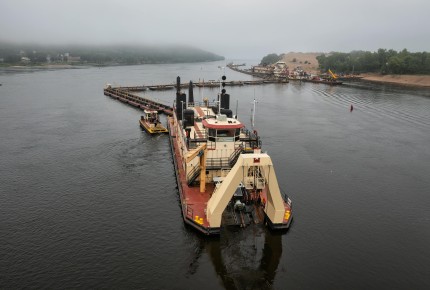Copyright © 2025 lmitac.com All Rights Reserved. Contact - Terms and Conditions - Privacy Policy - Quality Policy - Become an instructor - Vacancies - Sitemap
London Maritime Academy is a trade name for London Premier Groupversion: 2.9.0
London Maritime Academy is a trade name for London Premier Group

1/18/2025, 8:01:48 PM
HD Hyundai Mipo, a South Korean shipbuilder, has cut the first steel for a 46,000-cbm liquefied petroleum gas (LPG) carrier with an ammonia dual-fuel engine.
According to the shipbuilder, the event occurred in Ulsan on December 19, 2024. The Belgian shipping company EXMAR has purchased four ammonia-powered ships, the first is being constructed in South Korea.
Through its joint venture with Seapeak, EXMAR has purchased six dual-fuel LPG/ammonia midsize petrol carriers (MGCs). The newly formed organisation EXMAR LPG France will run the ship sextet. January 6, 2025, saw the naming of the first two units at Hyundai Mipo.
Additionally, the new structure will be 190 meters long and 30.4 meters wide when it is finished. It will have three cargo holds that can carry up to 46,000 cubic meters of liquefied gas, such as ammonia and LPG.
The ship will specifically utilise regular diesel fuel and ammonia, which burns without producing carbon dioxide. Likewise, it will be outfitted with some environmentally beneficial technologies, including a selective catalytic reduction (SCR) device and a shaft generator, which uses the propulsion engine's revolving shaft to generate power.
Moreover, a high degree of safety is ensured by several catastrophe prevention technologies, including an ammonia release mitigation system, a water spray system that stops exterior leaks at their source, and a detecting sensor that detects ammonia leaks in real-time.
When liquefied, ammonia has a storage density 1.7 times higher than that of liquefied hydrogen (-253°C) in the same volume, making it appropriate for large-scale, long-distance hydrogen transportation and storage.

Ammonia is an environmentally friendly, carbon-free fuel that can be stored in low-temperature tanks (-33°C) or pressurised tanks (about 8 bar) without the need for cryogenic technology.
For professionals hoping to keep ahead in this ever-changing area, Maritime Safety Courses in London provide critical expertise on integrating AI technology to improve security measures, environmental standards, and efficiency in operation.
Notably, HD Hyundai Mipo plans to lead the next generation of eco-friendly shipbuilding by 2026 by constructing four medium-sized ammonia-powered ships for EXMAR. The company seeks to leverage its extensive design and production experience and synergies with HD Hyundai Shipbuilding affiliates to secure new technologies for future markets.
At the 80th Marine Environment Protection Committee (MEPC) meeting in July of last year, the International Maritime Organisation (IMO) decided to decarbonise ships by reducing their total greenhouse gas emissions by 70% by 2040 and 100% by 2050 compared to 2008.
Overall, the shipping industry is taking notice of ammonia as a next-generation environmentally friendly fuel because it can be commercialised quickly.
Read more news: